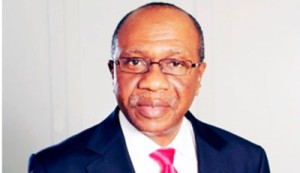
“Surprise” was the most popular verb associated by most commentators with the outcome of last week’s meeting of the Central Bank of Nigeria’s (CBN) Monetary Policy Committee (MPC) — its rate-setting committee. Habituated (in the last one year) to the spectacle of the apex bank sitting on its haunches even as critical economic indicators begged to be put out of their misery, our talking heads had all called a “hold” on policy options ahead of the MPC’s Monday and Tuesday meetings.
After its two-day deliberations, the committee opted, instead, to tighten monetary conditions. The 100 basis points rise in the CBN’s benchmark rate made sense in light of the fact that even before the release of the February inflation count, holders of naira-denominated assets had begun to see inflation erode their wealth. In part, the apex bank’s soft money policy was responsible for this. At its September 2015 meeting, the MPC commenced the reduction of banks’ cash reserve requirement (CRR), flooding the financial services space with a lot more loanable funds. It then proceeded to lay off issuing treasury bills.
Rates duly fell. For the banks could no longer warehouse their excess liquidity in treasury bills. Unfortunately, much of the new credit created out of this new liquidity fed the wrong beast: the federal government. A classic case of public sector borrowing crowding out the real sector? Not really, for truth is that despite the clamour for lower interest rates in support of the real sector, Nigeria is not really a low interest rate economy. Costs associated with doing business here are simply too many, arbitrary, and onerous. If, therefore, domestic interest rates merely reflect other non-complimentary domestic conditions, and is not the main let to business borrowing, forcing rates down arbitrarily was bound to end up driving unintended consequences.
If “demand” is not the main pull for rising prices, then policy must be crafted to address the “costs” that are pushing prices up. Clearly, and even the MPC acknowledged as much in its post-meeting communique, “exchange rate pass through from imported goods” have become a major driver of “rising inflationary pressure” in the economy, today.
Why would the CBN miss this fact? Because something in the apex bank’s DNA predisposes it to play to the popular gallery, rather than define appropriate policy responses of the facts as they are presented. For instance, in apparent response to February’s spike in the rate of increase in domestic prices, the apex bank tightened monetary conditions. Yet it admitted that higher and rising price levels are the result of structural and not monetary problems. Put differently, the MPC simply said: “we have no power to address this problem (it is not ours to) but we will still go ahead and put interest rates up”.
If “demand” is not the main pull for rising prices, then policy must be crafted to address the “costs” that are pushing prices up. Clearly, and even the MPC acknowledged as much in its post-meeting communique, “exchange rate pass through from imported goods” have become a major driver of “rising inflationary pressure” in the economy, today. However, and this is where much of the monetary policy conversation bellies up, is the CBN not the manager of our exchange rate? Moreover, has it not readily boasted about how well it has handled this part of its remit thus far?
How to square all this with the MPC’s insistence that “The average naira exchange rate remained stable at the inter-bank segment of the foreign exchange market during the review period”? Or that speculative activity was the major impetus behind rising demand in the foreign exchange markets? Not to worry, policy makers may have developed a new capacity for double-speak. Indeed, the MPC’s narrowing of “the asymmetric corridor (around the benchmark rate) from +200 and -700 basis points to +200 and -500 basis points” was the strongest pointer to this penchant for double-talk.
In the end, the MPC’s end-of-meeting statement was more useful for the points it raised obiter dictum. Sluggish output growth “was directly attributable to certain fiscal uncertainties”. In addition, subdued growth in “credit to private sector in preference to high credit growth to the public sector” owed much to “the absence of complementary fiscal and structural policies”.
Consistent with the new tightening preferences, this “narrowing” ought to have banks move more free funds into the apex bank’s standing deposit facility (SDF): they would earn 200 basis points more on such deposits than they did before. However, the CBN has in place a cap of N7.5bn on how much each bank may keep in the SDF. With most banks already near or at this threshold, the net effect of this narrowing would be zilch.
Did the MPC’s meeting, thus, shed more light on the poor state of the economy without generating much heat itself? No. The 250 basis points increase in banks’ CRR by from 20% to 22.50% would burden the industry enough to drive rates up quickly.
In the end, the MPC’s end-of-meeting statement was more useful for the points it raised obiter dictum. Sluggish output growth “was directly attributable to certain fiscal uncertainties”. In addition, subdued growth in “credit to private sector in preference to high credit growth to the public sector” owed much to “the absence of complementary fiscal and structural policies”.
Somehow, you got a sense reading the communique, of a body positioning itself ahead of the blame game that would come as more red flags show up on the domestic economy’s dashboard.
PREMIUM TIMES
END

Be the first to comment